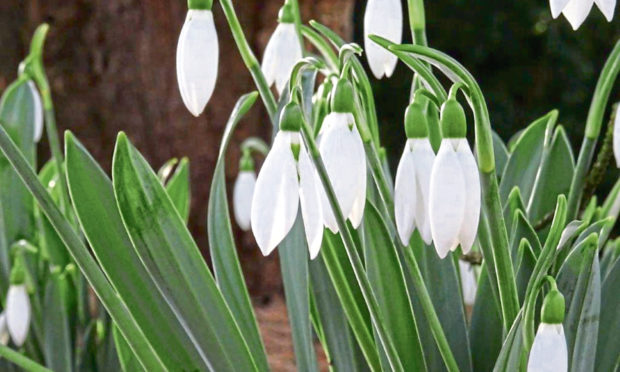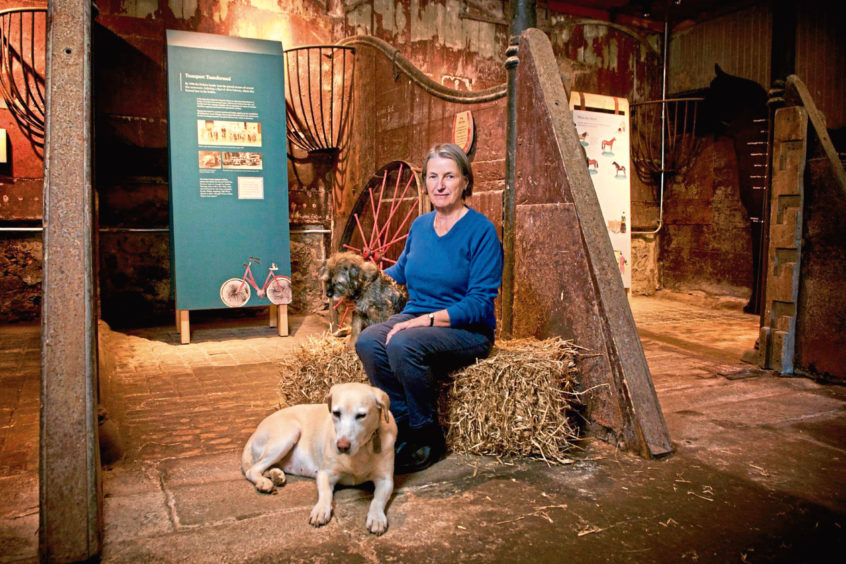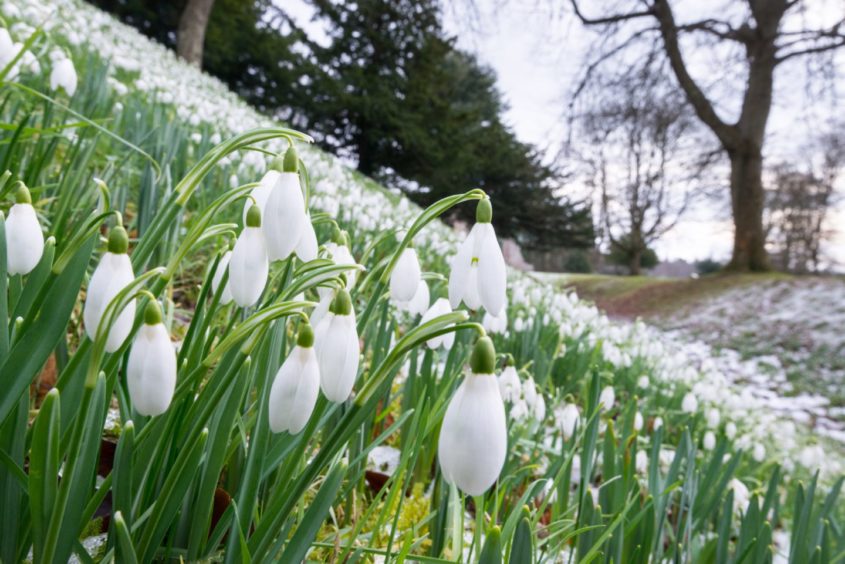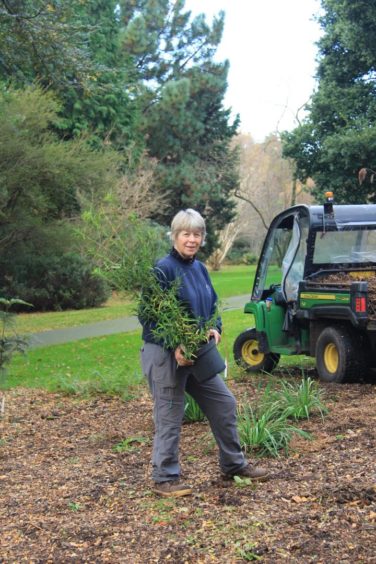Snowdrops are usually one of the first signs of spring, but this year’s crop have been buried under a blanket of snow. However, with the snow all but gone (we hope), it’s time to appreciate these pretty little flowers.
Cambo Estate near Kingsbarns in Fife has more than 350 varieties over 70 acres of woodlands.
Lady Catherine Erskine, the owner of Cambo, explains: “Most of the naturalised snowdrops in the woodlands are Galanthus nivalis Flore Pleno – the ‘double’ snowdrop – but as snowdrops mutate easily we have new varieties that pop up around Cambo from time to time, surprising us!”
Lady Erskine reveals she’s a real fan of the extra tall/strong early snowdrop which is naturalised on the first woodland bank as one leaves the walled garden.
“It’s the first snowdrop out at Cambo each year and so vigorous,” she smiles.
“My other favourite is our fabulous double snowdrops, each one is almost unique, all a little bit different with their inner ruffles. Their little robust flowers carpet the woodlands like no other varieties can for that gorgeous display Cambo is famous for in the grounds.”
For a cheap and cheerful option, she recommends the Magnet variety and, “for sheer beauty – Comet. For intriguingness – half green and half yellow markings – Blonde Inge,” she continues.
The woodland collection largely takes care of itself as little management is required for established snowdrop woodlands.
“Every few years we seek to lift and split crowded clumps to allow the bulbs to have more space and replant in the woodlands nearby or sell the surplus online,” explains Lady Erskine.
“The specialist collection is a bit more specific in terms of management. We tend to ensure these are correctly labelled, they are thriving and that they are split up every few years to encourage good growth. Our specialist bulbs have their maturing seed pods – ovary – carefully removed. It’s green pea sized casing, behind the flower, once it’s finished flowering.
“This is to encourage the bulb to put its growth efforts into the bulb growth and flower development for next year rather than trying to produce seeds.
“Removal of this ovary allows the plant to focus its efforts into producing a good flowering bulb for the following season. Some of our potted specialist bulbs can also be given a liquid feed after flowering to help promote next year’s growth,” she explains.
“Whilst we don’t remove the seedpods of our naturalised collections – could you imagine the task in 70 acres! – in both cases we do allow the snowdrops to die back naturally in the late spring and only remove growth once it’s dead.
“This allows the bulbs to use as much of their seasons energy to go back into the bulbs, which will hold next year’s flowers inside.”
Cambo’s annual Snowdrop Festival usually welcomes thousands of visitors from all over Scotland – but not this year.
“We are open for local visitors but with managed numbers so advise booking ahead, especially at the weekend,” says Lady Erskine.
“We also have weekly online tours on the snowdrop theme which can be accessed on our website and Facebook page.
“We work closely with our two local primary schools and are providing some linked home learning about snowdrops – and of course our Tamworth piglets.
“Nature is helping us all through the struggles of this pandemic and one of the reasons the Snowdrop Festival is so popular is people feel hopeful when they see snowdrops – the first sign of growth in a new year.
“This is especially important now and we hope even if people can’t visit, watching a film from the garden over a cup of tea will bring a bit of joy.”
Cambo Gardens is a charity and Lady Erskine and the team are missing all the volunteers and groups that contribute to the gardens and conservation projects in the woodlands.
“We hope we can welcome them back soon,” she says.
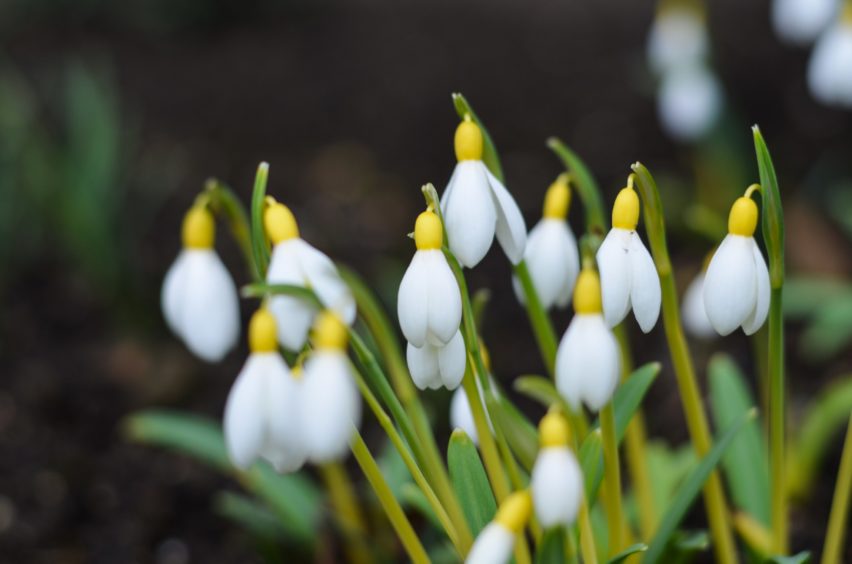
“Like all businesses we have been continually adapting since last March and appreciate the support of our community who have been visiting when we have been open.
“We have extended our online business too, selling snowdrops but also our gift shop items. At the moment we are missing the amazing food from Gill Veal as our cafe is closed during lockdown.”
Lady Erskine has some fascinating facts about snowdrops. For example, did you know that legend has it that an angel sprinkled snow around Eve once she had been cast out of the Garden of Eden and told her not to cry, spring would come.
“As the snowflakes touched the ground they sprang into little flowers and the angel told Eve: ‘Take heart, dear Eve, be hopeful and despair not. Let this little snowdrop be a sign to you that the summer and the sunshine will come again.’
“A number of snowdrops sprang up in the snow and this is how the snowdrop came to be a symbol of hope and of the promise of the end of winter and the arrival of spring,” says Lady Catherine.
“Also, the extract of Snowdrops (Galantamine), is used for the treatment of cognitive decline in mild to moderate Alzheimer’s disease and various other memory impairments. It is an alkaloid that has been isolated from the bulbs and flowers of Galanthus nivalis (Common snowdrop) and it is stronger the further north you travel up the country.
“Studies as far north as Orkney have shown that the concentration of the property in the bulb increases significantly.”
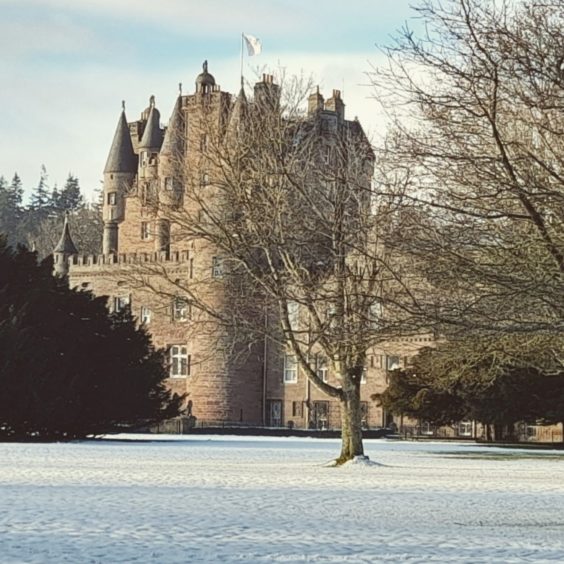
Meanwhile, at Glamis Castle in Angus, head gardener Des Cotton has been hard at work planning an online snowdrop event.
“It will be a short film tour of some of our snowdrop displays around the garden, to appear on our social media platforms linking into Discover Scottish Gardens’ Scottish Snowdrop Festival,” Des explains.
“We will also be posting some regular images of snowdrops, again through social media, to hopefully send a little snowdrop cheer into people’s homes.”
He anticipates the castle’s displays will be looking at their best towards the end of February. There are around five different varieties of snowdrops at Glamis, and Des explains: “Our collection is mainly drifts of the common – but no less spectacular – Galanthus nivalis, naturalised over the last 100 years or so.
“I like them en masse – When you come across a forgotten drift in the woods, it feels like a privilege to see them.
Des has some tips for keeping your snowdrops looking their best: “Keep them away from other plants such as the invasive rhododendron ponticum, as well as evergreen shrubs and trees,” he advises.
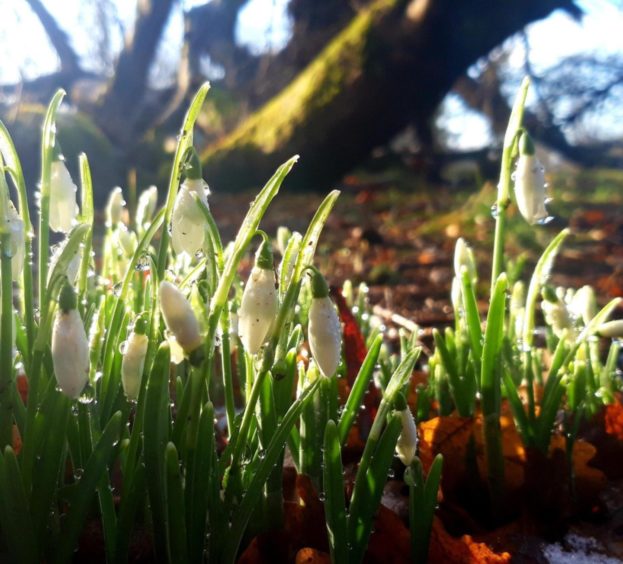
“Don’t grow them in grass as they just don’t thrive and always plant or divide this time of year when they are growing – ‘in the green’ – as planting bulbs in autumn often ends in failure because the little bulbs just don’t like drying out.”
Des has two more facts to add to Lady Catherine’s snowdrop did you knows: “The slightly odd sounding word ‘Galanthophile’ refers to a person who collects snowdrops,” he says, “while bringing a single snowdrop into your house was once said to be bad luck.”
In previous years Des and the team have opened the garden gates in February to welcome visitors to come along and help plant up new snowdrop areas within the gardens for future generations to enjoy.
“We aim to continue this in future years but for anyone who may have helped in previous years – their plantings are looking good and we hope to see you back next year.”
Clare Reaney, botanical technician at University of Dundee Botanic Garden, looks after the four species of snowdrop at the garden, which is still open to the public.
“Galanthus ikariae grows in our Mediterranean garden – many wild Snowdrops are native to Greece or Turkey and this species grows wild on only four Greek islands,” Clare explains.
“There are also a lot of wild common snowdrops in the native plant area, although it is thought snowdrops are not really native to UK but came to us via Europe.”
According to Clare, snowdrops are very easy to grow and will self seed and when they want to increase the plants in the woodland they dig them up and gently divide them immediately after flowering.
“It’s always best to purchase snowdrops like this – bulbs that have been stored too long and dried out usually fail to grow.”
Clare and the team will be planting Snowdrops in the WeeCair Physic Garden being developed on University of Dundee Campus for their chemical properties used in the treatment of Alzheimer’s.”
